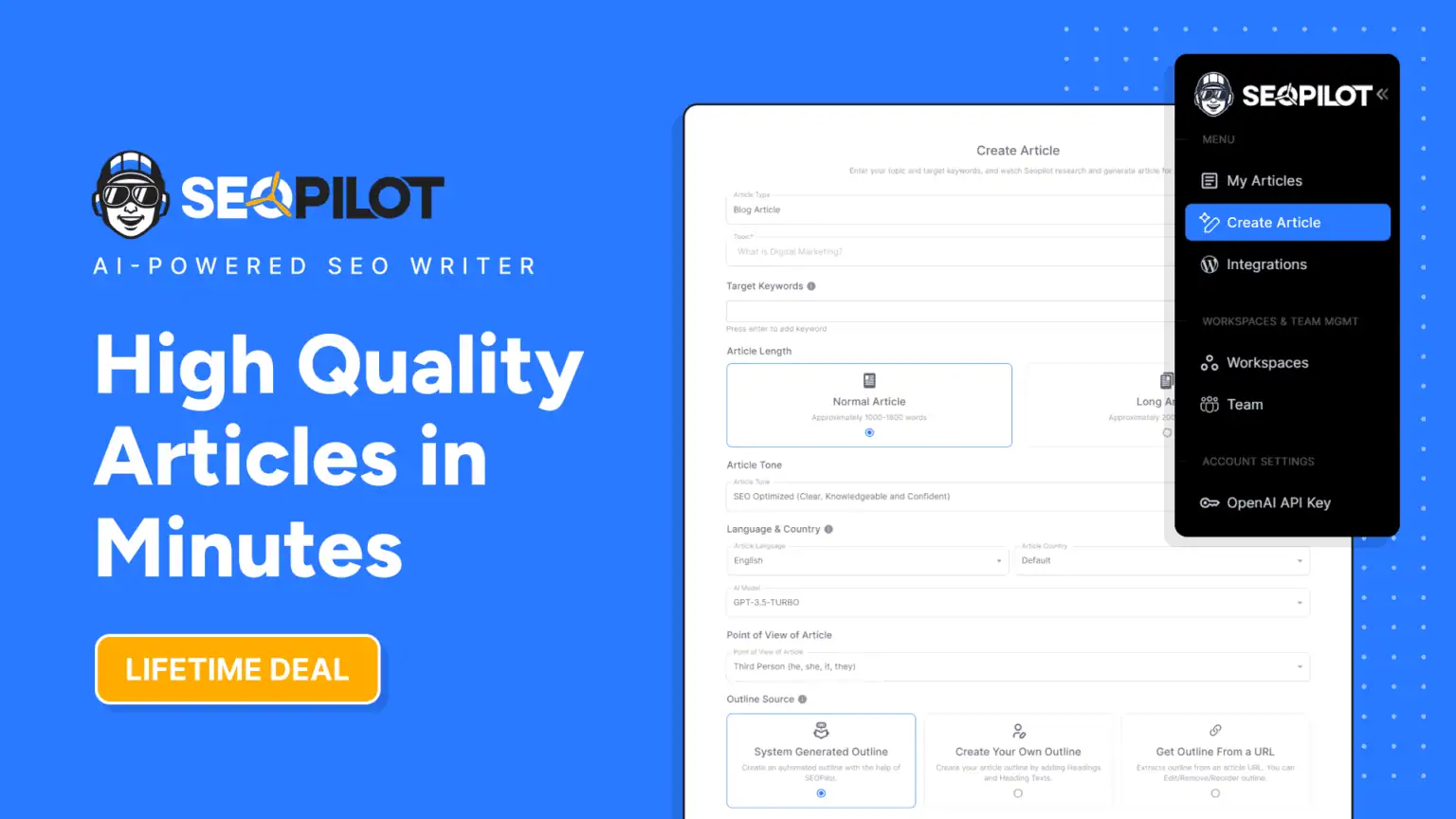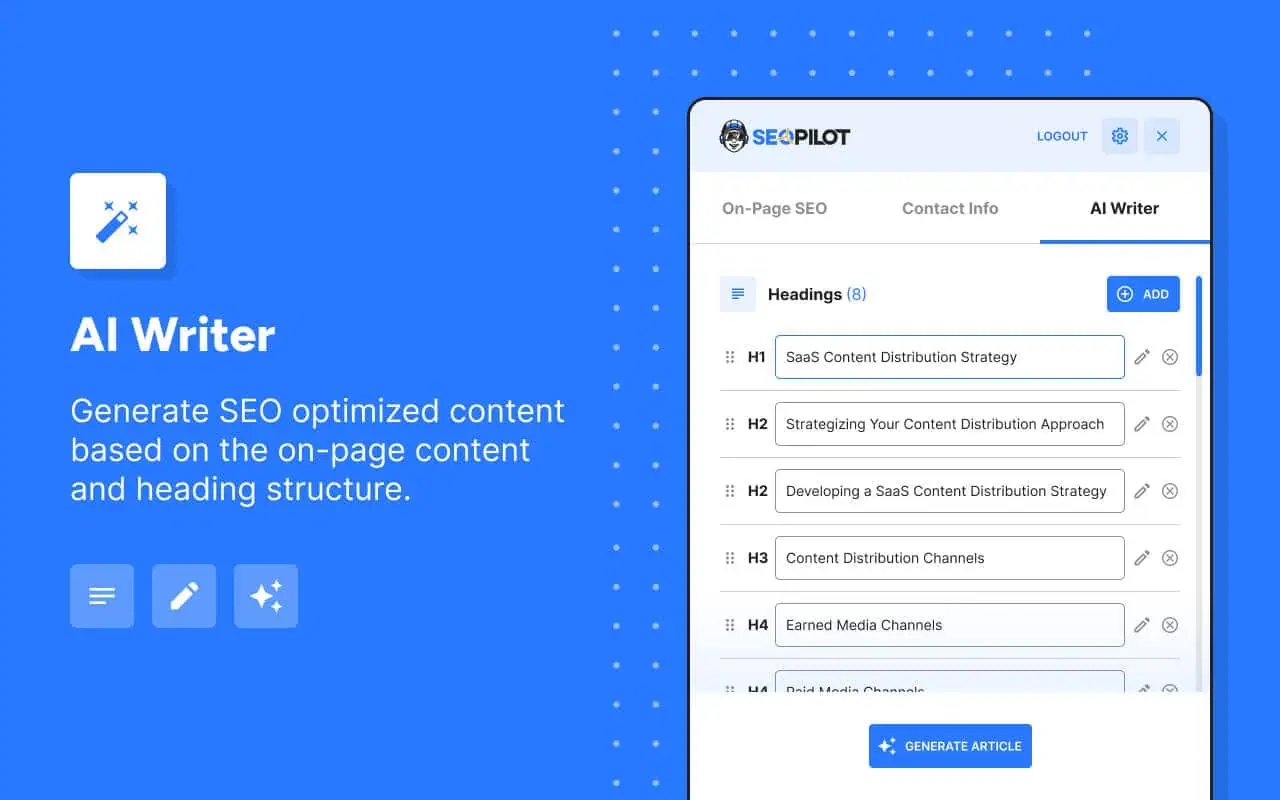
AI-Powered Content Generation: SEOPilot’s primary function revolves around generating 1,000–2,000+ word articles optimized for search engines. Users input a target keyword and topic, then select from parameters like article length (normal/long), tone (SEO-optimized, professional, empathetic), and point of view (first, second, or third person). The AI constructs articles using system-generated outlines or user-defined structures, incorporating H2-H4 headings, tables, FAQs, and key takeaways based on SEO best practices. Unlike generic AI writers, SEOPilot focuses on single-topic depth rather than bulk generation, reducing the risk of producing low-quality “content spam”.
The platform’s WYSIWYG editor allows real-time editing without external tools, supporting rich text formatting, image insertion, and direct WordPress publishing. For teams, collaborative features include shared workspaces (up to 25 in top-tier plans), content calendars, and article clustering to organize content strategies.
SEO-Specific Enhancements : Beyond basic content creation, SEOPilot integrates on-page optimization tools. The AI automatically includes external links to authoritative sources, internal linking suggestions (500–10,000 URLs depending on plan), and NLP keyword integration. Advanced users can enable featured snippets, schema markup, and mobile-friendly formatting through the editor. The companion Chrome extension analyzes existing web pages, extracting headings and meta descriptions to inform new content structures.
Workflow Integration: SEOPilot reduces tool switching through native WordPress integration, allowing one-click publishing to connected sites. For non-WordPress users, articles export as RTF, HTML, or PDF with preserved formatting. The platform’s API supports custom integrations with CMS platforms like HubSpot and Shopify, though this requires developer input.
Differentiation Factors: SEOPilot’s BYOK (Bring Your Own Key) model provides flexibility in AI model selection (including Claude AI), enabling cost control and output customization. Competitors relying on proprietary AI often limit monthly queries or charge per word46. The platform’s emphasis on human-AI collaboration—through editable outlines and post-generation editing—addresses Google’s EEAT (Experience, Expertise, Authoritativeness, Trustworthiness) requirements better than fully automated solutions.

SEOPilot’s development team includes veterans from content marketing and SaaS industries, though specific founder details remain undisclosed. The company prioritizes iterative updates, recently adding real-time content grading and Claude AI integration based on user feedback.
SEOPilot AI Writer excels as a cost-effective solution for teams producing 50–300 SEO articles monthly. Its balance of customization (tone, POV, outlines) and automation (WordPress publishing, internal linking) makes it particularly valuable for small businesses and niche websites targeting long-tail keywords. However, enterprises requiring multilingual support or built-in keyword research should monitor the platform’s 2025 roadmap updates before committing.
For optimal results, pair SEOPilot with grammar checkers (Grammarly) and plagiarism detectors (Copyscape). Agencies should train writers on prompt engineering—specific keyword placement, FAQ customization—to maximize the AI’s output quality. With strategic implementation, SEOPilot can reduce content costs by 60–80% while maintaining organic traffic growth